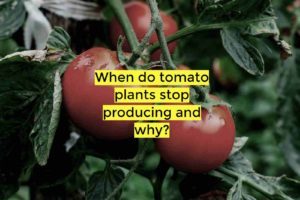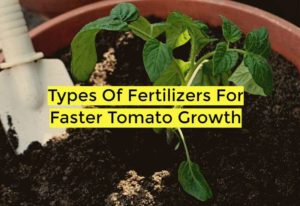A tomato plant that fails to produce flowers can be frustrating for gardeners eagerly awaiting their harvest. Fortunately, there are several methods that can be employed to encourage tomatoes to flower and produce a bountiful crop.
In this article, we will explore some of the most effective ways to encourage tomatoes to flower, from providing adequate sunlight and nutrition to pruning and pollination techniques. With a little bit of care and attention, you can help increase flowering in your tomatoes and produce a harvest that you can enjoy all season long.
How To Increase Flowering In Tomatoes
Here are some tips to encourage tomatoes to flower:
Choose the right variety
Not all tomato varieties are created equal when it comes to flowering. Look for varieties that are known to flower like crazy, such as cherry tomatoes, or determinate varieties like ‘Roma’ or ‘San Marzano’.
Provide adequate light
Adequate sunlight will encourage tomatoes to flower. So make sure they are planted in a location that receives at least 6-8 hours of direct sunlight each day.
If your garden is shady, consider planting tomatoes in containers that can be moved to sunnier spots. In some cases, you may need to trim nearby trees or shrubs to allow more sunlight to reach your tomato plants.
Feed regularly
Tomatoes are heavy feeders and require a steady supply of nutrients to produce flowers.
A balanced fertilizer, such as a 10-10-10 formula, provides equal parts of nitrogen, phosphorus, and potassium, which are essential nutrients for healthy growth and development.
Apply the fertilizer every two weeks throughout the growing season, following the instructions on the package.
Keep in mind that over-fertilizing can actually harm your tomato plants, so be sure to follow the recommended dosage.
Water consistently
Tomatoes need consistent moisture to encourage tomatoes to flower, but overwatering can lead to root rot and other issues.
Aim to water deeply once a week, rather than giving the plants a light sprinkle every day. You can learn how to water tomatoes this another article.
Prune wisely
While it may seem counterintuitive, pruning can actually encourage tomato plants to produce more flowers.
Remove any “suckers” that grow between the main stem and branches, as these can divert energy away from flower and fruit production.
Use companion planting
Some plants, such as basil, marigolds, and borage, are known to attract beneficial insects that can help pollinate tomato flowers.
Consider planting these companion plants alongside your tomatoes to help encourage flowering.
Remember that tomatoes are notorious for being slow to flower. Don’t be discouraged if your plants take a few weeks to start producing blossoms.
With consistent care and patience, you’ll soon be enjoying a bumper crop of juicy, flavorful tomatoes.
what nutrient makes tomatoes bloom?
Phosphorus is the nutrient that is most closely associated with promoting flower and fruit production in tomatoes.
Phosphorus is important for root development and flower formation, and it plays a key role in the plant’s energy production.
When tomato plants have access to sufficient phosphorus, they are better able to produce the energy they need to develop flowers and fruit.
However, it’s important to note that while phosphorus is important for flower formation, it’s not the only nutrient that tomato plants need to bloom.
Nitrogen and potassium also play important roles in overall plant health and can help support flower and fruit production when provided in the right amounts.
How do these Nutrients help flowering?
Fertilizers are important for providing the essential nutrients that tomato plants need to grow and produce flowers.
By providing the right balance of nutrients, fertilizers can help ensure that tomato plants have the resources they need to produce healthy foliage and abundant flowers.
Here’s how the three main nutrients in fertilizers – nitrogen (N), phosphorus (P), and potassium (K) – help promote flowering in tomato plants:
Nitrogen (N)
Nitrogen is important for promoting healthy leaf growth and the production of chlorophyll, which is essential for photosynthesis. However, too much nitrogen can encourage the plant to focus its energy on leaf growth rather than flower production. By providing a balanced amount of nitrogen, tomato plants can grow strong and healthy leaves without sacrificing flower production.
Phosphorus (P)
Phosphorus is important for root development and flower formation. It helps the plant produce the energy it needs to develop flowers and fruit. In general, tomato plants need higher levels of phosphorus when they are young and during the flowering and fruiting stages.
Potassium (K)
Potassium is important for overall plant health and helps regulate many of the plant’s physiological processes, including water uptake and nutrient transport. It also plays a role in the development of strong stems and roots, which can support flower and fruit production.
What causes tomatoes to stop blooming?
Tomato plants can suddenly stop blooming, leaving gardeners frustrated and wondering what went wrong.
There are several reasons why tomato plants may stop blooming. You can easily avoid them with proper care to encourage them to start producing flowers and fruit once again.
Let’s get into some of the common causes of tomato plants failing to bloom and what you can do to encourage them to start flowering again.
Lack of sunlight
Tomato plants need plenty of sunlight to produce flowers and fruit. If your plants are not getting at least 6-8 hours of direct sunlight each day, they may not be able to bloom. Consider moving your plants to a sunnier location or trimming nearby trees or bushes to allow more sunlight to reach your tomato plants.
Overcrowding
Tomatoes that are planted too close together can compete for resources, which can lead to stunted growth and reduced flower production.
Spacing is very important to encourage tomato flowering because of the resources.
Make sure to space your tomato plants at least 2-3 feet apart to allow for good air circulation and ample access to nutrients and water.
Nutrient deficiencies
A lack of essential nutrients such as phosphorus, potassium, or calcium can also cause tomato plants to stop blooming.
Make sure your soil has the proper balance of nutrients and consider using a fertilizer that is specially formulated for tomato plants. You can also add organic matter to your soil, such as compost or aged manure, to help improve soil fertility.
Temperature extremes
Tomato plants are sensitive to temperature fluctuations, especially when it comes to flowering.
If temperatures are too hot or too cold, the plants may not be able to produce flowers.
Ideally, temperatures should be between 60-90°F during the day and above 55°F at night.
If temperatures are outside of this range, consider providing shade or a cover for your plants to help regulate the temperature.
Pests and diseases
Certain pests and diseases can also cause tomato plants to stop blooming. Aphids, spider mites, and whiteflies are common pests that can infest tomato plants and reduce flower production.
Diseases such as bacterial spot or verticillium wilt can also cause plants to become stressed and stop blooming.
Regularly inspect your plants for signs of pests or diseases and take action as needed
Summary
In conclusion, encouraging tomato plants to flower will do you so much good. Just make sure you give your plants proper care, adequate sunlight, and the right nutrients. With that, you can promote healthy growth and abundant flower production.
From pruning and staking to pollination techniques and soil amendments, there are many ways to encourage your tomato plants to bloom and produce a bountiful crop. So, roll up your sleeves and get started on your tomato garden – your taste buds will thank you for it!




